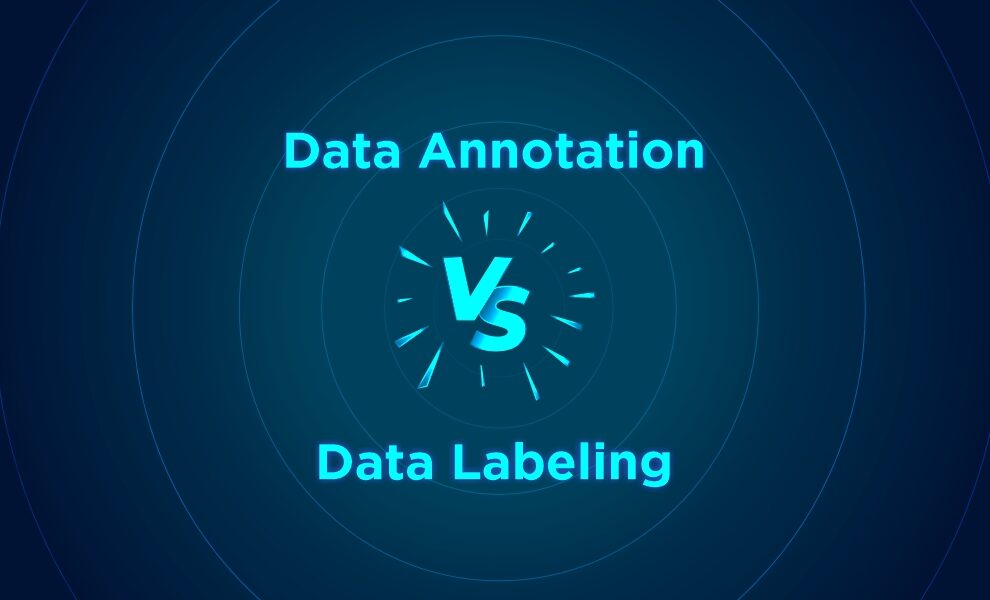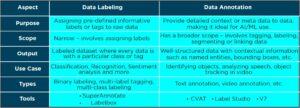AI and machine learning are all around! It’s transforming businesses across the globe with its next-gen capability, efficiency, scalability, and more. Amidst all, many organizations struggle to get high-quality training data for AI/ML projects.
Absolutely, right! The point is that the overall success of your project depends on the data you work on for measurable outcomes. Here is where the terms data annotation and data labeling come to light. Even though these two terms are used interchangeably, it’s important to understand the differences between data annotation and data labeling.
To put it in short, both work with the same perspective of enhancing the AI and ML models. According to a study, the global data annotation and labeling market recorded a valuation worth $6.5 billion in 2025 and will grow at a CAGR of 25% from 2025 to 2030.
Let’s now head over to the main blog. Firstly, we’ll understand data annotation and data labeling in brief.
What is Data Annotation?
Data annotation is all about adding informative tags to the datasets, making it simpler for the machine learning models to better understand and process them effectively. The data can be anything from text, audio, video, and more. Annotating or labeling data points gives them structure, context, or significance.
Alongside, data annotation plays a vital role in supervised learning, where annotated data is used as a reference to learn patterns and make predictions. Without this, handling data would be a complete fuss!
Types of Data Annotation:
There are different types of data annotation depending on the type of data and machine learning task to be performed. Here we have listed them:
Text Annotation: Adding entity labels, sentiment labels, or part-of-speech tags for NLP tasks.
Image Annotation: Tagging objects found in the images. (For example, bound boxes around the table).
Semantic Segmentation: Adding pixel-level labels to images, to differentiate them from objects or regions in the image.
Video Annotation – Tagging moving objects frame-by-frame for things like self-driving cars.
What is Data Labeling?
Data labeling is the process of assigning predefined labels or tags to data points. Every label helps the model learn patterns, understand the data meaningfully, and make informed predictions.
It focuses on categorizing or classifying data based on predetermined criteria. Data labeling goes above and beyond in certain machine learning and deep learning use cases, such as natural language processing (NLP), computer vision, speech recognition, and more. It’s the whole and sole factor for training data!
Check out the example of data labeling: Marking emails as spam or not spam. This is nothing but labeling the given data with the tag.
Data Annotation vs Data Labeling: A Quick Comparison
Data annotation and data labeling both have the same goal of enhancing AI models. Though, there are some key differences you should know.
Let’s understand the differences in brief:
The Process
Labeling is based on binary (yes/no) format and classification based on the categories. For example, as stated above, knowing if the email is spam or not spam. Next is whether the customer review is good or bad. They offer straight answers without giving much explanation.
On the other hand, Annotation is the process of adding more context, structure, or descriptive information to raw data. In contrast to labeling, which is about providing answers, annotation is more exploratory.
Using an image as an example again, the annotation may consist of drawing a bounding box around a dog, defining its breed, the position in the frame, and even its action, such as sitting or running.
Applications
Labeling works best in scenarios that need simple classification. This includes identifying objects, analyzing sentiment, and more. On the other hand, data annotation is here for advanced AI applications such as language processing models and complex AI systems with multiple data types. All these need additional information for processing, and data annotation offers it all.
Skill Requirements
When it comes to data labeling, one must have a good understanding of the predefined labels or categories in the project. They must be well-experienced in applying particular labels to the data to ensure accuracy. In short, knowledge is a must to drive effective outcomes.
However, data annotation needs a high level of skill. To provide annotations in a sophisticated way, annotators must understand the context of the data. Let’s take an example where annotating medical images for tumor diagnosis is important. Annotators must have a higher understanding of medical language and anatomy.
Support of Machine Learning Algorithms
Data labeling is primarily used in supervised learning, where input-output pairings are used to train the model, providing concrete examples of the correct output.
Even though it is also necessary in supervised learning, data annotation is especially important for deep learning models that require large, complex datasets and then recognize patterns from them. For instance, annotated images with object locations and classifications—not just labels—are required to train a convolutional neural network (CNN) on object detection.
Automation and Tooling
The field of data annotation has improved significantly in terms of use case automation, with technologies that model-assisted recommendations that can automatically label huge datasets. A number of platforms today are available for semi-supervised workflows – that simply require human input for validation.
On the other hand, data annotation is still very human-intensive when it comes to complicated picture segmentation, 3D points clouds, and long-form voice transcribing. The process is more powerful but also more intensive with annotation platforms such as CVAT or Label Studio as they blend feature richness and functionality with editing frame by frame, zoom-in accuracy, and language entity linking.
Examples of Data Labeling and Data Annotation
Data Labeling is here to:
- Classifying images such as “book,” or “pen”
- Helps in spam detection, “spam” or “not spam” email filter
- Sentiment analysis, labeling a customer review as “positive,” “negative” or neutral.
- Recognition
Data annotation is here to:
- Object tracking in video
- To analyze speech
- Identifying objects
- Facial landmark annotation wherein features such as eyes, nose, and ears are marked in the facial image.
The main point is data labeling and data annotation involves human annotators. This approach assures accuracy of data tagging and completion of complex tasks. When talking about data labeling, it can be ideal for huge data sets.
Making it to the Last!
Data labeling and data annotation both play key roles in the world of AI and machine learning. After all, you need to choose one for building your projects. Data annotation is all about labeling or tagging data to make machine learning understand the same. Data labeling is adding informative tags to unlabeled data so that ML models can categorize data easily for analysis. Hope the blog has given you a clear idea between the two, data annotation and data labeling.
HiTechNectar is a top-ranking and trusted site with all the tech-trending blogs.
Recommended reading:



